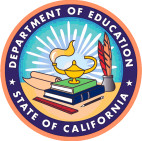 California teachers have new guidance from the State Board of Education as they continue implementing the California Common Core State Standards for Mathematics, State Superintendent of Public Instruction Tom Torlakson announced Wednesday.
California teachers have new guidance from the State Board of Education as they continue implementing the California Common Core State Standards for Mathematics, State Superintendent of Public Instruction Tom Torlakson announced Wednesday.
The State Board of Education today approved the new Mathematics Framework for California Public Schools, which provides instructional guidance for teachers and administrators. The Framework provides grade-level explanations and examples of the standards for mathematics practice and content, integrating mathematical thinking and conceptual understanding with procedural skills and application.
“The new Framework gives educators important new guidance and resources to teach students step-by-step the mathematics knowledge and skills they need to graduate ready for college and careers,” Torlakson said. “From teaching strategies to evaluation criteria, it will help teachers as they work to modernize education in California.”
For example, the Framework provides guidance for educators on a range of topics, including instructional strategies to strengthen learning for every student, the qualities of effective professional development, technology for instruction and learning, criteria for evaluating instructional materials, assessment to improve instruction and learning, and inclusion of financial literacy into math instruction.
“The new Framework helps teachers to have students apply mathematics to new and different content areas and contexts,” State Board of Education President Michael Kirst said. “The Framework moves beyond students just memorizing rules to solve math problems by asking them to make complex inferences, estimates, and models that are part of the Common Core.”
The Framework provides a context for implementing the California Common Core State Standards for Mathematics, which were first adopted by California in 2010, and then modified in 2013. Standards describe what students should know and be able to do in each subject in each grade. Frameworks provide guidance for implementing the standards. Common Core is a state-led effort adopted by 45 states, so that all children—no matter where they come from or where they live—will receive a world-class education that is consistent from school to school and state to state.
The newly adopted Framework was created by a committee of educators and math experts, most of whom are teachers in California classrooms, under the guidance of the state Instructional Quality Commission. The draft Framework was informed by public comment, before being presented to the State Board of Education for adoption. The Instructional Quality Commission unanimously recommended the Framework to the State Board of Education for adoption.
The Mathematics Framework for California Public Schools is currently available in draft form on the California Department of Education’s Web site and will soon be updated to reflect its final adoption by the State Board of Education.
California’s move to modern new science standards took another step forward as the State Board of Education approved a preferred model for middle grade learning progressions, which integrate science instruction, State Superintendent of Public Instruction Tom Torlakson announced today.
The Next Generation Science Standards (NGSS) bring science instruction up to date, reflecting new understanding of not only knowledge and skills, but of how students learn best. NGSS emphasizes a deeper focus on understanding the cross-cutting concepts within and across scientific disciplines. These new standards integrate engineering practices with science practices to help students understand the workings of science and the natural world. NGSS will cut across various science disciplines and incorporate the Common Core State Standards in math and English language arts, so students will build and deepen their knowledge of science.
“This decision means that all students—from kindergarten through graduation— will have a smooth learning transition from grade to grade,” Torlakson said. “California’s economy and status rest in part on our leadership in science and technology, and these standards will help ensure our students will graduate with the knowledge and skills they need to succeed outside our classrooms.”
The Board also requested the California Department of Education reconvene the Science Expert Panel to develop an alternative model of science instruction that is specific to each middle grade level. The Science Expert Panel was convened by Torlakson earlier this year to review the standards. It included kindergarten through grade twelve teachers, scientists, educators, business, industry representatives, and informal science educators.
California was a lead state in developing the standards, in a voluntary and transparent process over the last two years. California teachers, scientists, college professors, business and industry leaders, and educational experts all took part in an 80-member California NGSS review team that thoroughly examined the standards five times. The state’s previous standards were adopted 15 years ago.
Next, a Strategic Leadership Team will be appointed by Torlakson to develop a plan to implement the NGSS. This includes a timeline for implementation, adopting a science framework, developing student assessments, and strategies for school districts. Once the team completes its work, the strategic action plan will be presented to the State Board of Education for approval at a future meeting. For more information on the development of the NGSS, visit the California Department of Education’s Next Generation Science Standards Web page.
Science, technology, engineering, and mathematics (STEM) industries are major components of California’s economy. A 2011 U.S. Department of Commerce study, “STEM: Good Jobs Now and For the Future,” found that over the past 10 years, growth in jobs involving STEM fields was three times greater than that of non-STEM occupations. The report also forecast that STEM jobs are expected to continue to grow at a faster rate than others in the coming decade.
California is preparing to host its first annual STEM Symposium, set for November 18-19, 2013, at the Sacramento Convention Center. This symposium will highlight how quality STEM programs align with Common Core State Standards and the Next Generation Science Standards and provide strategies and resources for program implementation. For more information, visit the 1st Annual California STEM Symposium 2013 Web site.
The State Board of Education is the governing and policy-making body for public K-12 education in California. The President of the Board is Michael W. Kirst and the Executive Director is Karen Stapf Walters. Board members are appointed for four-year terms by the Governor of California and are confirmed by the State Senate. For more information, please visit http://www.cde.ca.gov/be.
The California Department of Education (CDE) is a state agency led by State Superintendent of Public Instruction Tom Torlakson. For more information, please visit http://www.cde.ca.gov or by mobile device at http://m.cde.ca.gov/. You may also follow Superintendent Torlakson on Twitter at https://twitter.com/cadepted and Facebook at http://www.facebook.com/CAEducation.
Like this:
Like Loading...
Related




 Tweet This
Tweet This Facebook
Facebook Digg This
Digg This Bookmark
Bookmark Stumble
Stumble RSS
RSS





























REAL NAMES ONLY: All posters must use their real individual or business name. This applies equally to Twitter account holders who use a nickname.
3 Comments
Eeesh.. Common Core..
The demise of public education….right before our eyes.
Very true.